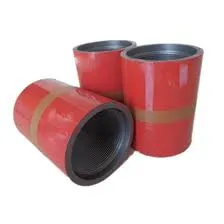- Afrikaans
- Albanian
- Amharic
- Arabic
- Armenian
- Azerbaijani
- Basque
- Belarusian
- Bengali
- Bosnian
- Bulgarian
- Catalan
- Cebuano
- Corsican
- Croatian
- Czech
- Danish
- Dutch
- English
- Esperanto
- Estonian
- Finnish
- French
- Frisian
- Galician
- Georgian
- German
- Greek
- Gujarati
- Haitian Creole
- hausa
- hawaiian
- Hebrew
- Hindi
- Miao
- Hungarian
- Icelandic
- igbo
- Indonesian
- irish
- Italian
- Japanese
- Javanese
- Kannada
- kazakh
- Khmer
- Rwandese
- Korean
- Kurdish
- Kyrgyz
- Lao
- Latin
- Latvian
- Lithuanian
- Luxembourgish
- Macedonian
- Malgashi
- Malay
- Malayalam
- Maltese
- Maori
- Marathi
- Mongolian
- Myanmar
- Nepali
- Norwegian
- Norwegian
- Occitan
- Pashto
- Persian
- Polish
- Portuguese
- Punjabi
- Romanian
- Russian
- Samoan
- Scottish Gaelic
- Serbian
- Sesotho
- Shona
- Sindhi
- Sinhala
- Slovak
- Slovenian
- Somali
- Spanish
- Sundanese
- Swahili
- Swedish
- Tagalog
- Tajik
- Tamil
- Tatar
- Telugu
- Thai
- Turkish
- Turkmen
- Ukrainian
- Urdu
- Uighur
- Uzbek
- Vietnamese
- Welsh
- Bantu
- Yiddish
- Yoruba
- Zulu
Understanding the Function and Importance of Pup Joints in Oil and Gas Industry
Understanding Pup Joints An Overview
In the realm of oil and gas drilling, pup joints play a crucial role in the assembly of tubulars. For those unfamiliar with the terminology, a pup joint is a short section of pipe used to make small adjustments in the length of a drill string. These components are vital for ensuring that the drilling equipment is precisely fitted to the requirements of the project at hand.
What Exactly is a Pup Joint?
A pup joint is generally defined as a pipe segment that measures between 2 to 10 feet in length. While this might seem trivial, these short segments are essential in the oil and gas industry. They act as flexible connectors that help maintain the required tension and alignment of the drilling string. The flexibility offered by pup joints allows drillers to make incremental length adjustments while ensuring the overall stability and functionality of the drilling operation.
The Importance of Pup Joints
Pup joints serve multiple purposes in drilling operations. Firstly, they facilitate the correction of slight misalignments that can occur due to changes in terrain or variations in wellbore conditions. Without pup joints, achieving precise alignment could be a challenging task, leading to inefficient drilling and potential equipment failures.
Secondly, pup joints help in maintaining the integrity of the wellbore. In situations where extra length is necessary, such as when drilling deeper than initially planned, pup joints provide a quick and effective solution without requiring extensive redesigns of the entire drill string. This makes them invaluable in both new drilling operations and workover projects, where adjustments may be frequently needed.
Design and Material Considerations
what is a pup joint

Pup joints are typically manufactured using high-strength steel to withstand the significant stresses and strains encountered during drilling operations. The standard specifications often dictate that these components must comply with the American Petroleum Institute (API) standards. The materials used in pup joints must be resistant to corrosion, especially in environments with high sulfur content or saline conditions.
Furthermore, pup joints can be obtained in various diameters to match different drilling requirements. Whether operating in shallow waters or deep offshore environments, the versatility in size and design allows operators to tailor their drilling equipment to specific conditions.
Applications in Drilling Operations
In practice, pup joints often find themselves in both primary and secondary drilling applications. They can be used in conjunction with casing and tubing strings to enhance the functionality of the overall drilling assembly. Additionally, pup joints are helpful in formations that might shift or settle over time, as they provide the necessary flexibility to adapt to such changes.
For example, when drilling in a challenging geological formation, the use of multiple pup joints can help maintain the integrity of the drill string while navigating through layers of hard rock or unstable soil. This flexibility can ultimately lead to fewer drilling complications and more efficient operations.
Conclusion
In summary, pup joints are indispensable components in the drilling industry that offer significant advantages in terms of flexibility, alignment, and efficiency. While they may be small in size, their impact on the overall success of drilling operations is substantial. As the oil and gas industry continues to innovate and evolve, the role of pup joints remains vital for meeting the demands of modern drilling techniques and ensuring the effective extraction of resources. Whether in onshore or offshore drilling, these short sections of pipe facilitate crucial adjustments, making them a key element in the complex architecture of drilling operations. Understanding and utilizing pup joints effectively can make a marked difference in the success of drilling endeavors.
-
Well Casing Extension Couplings – Applications and InstallationNewsJun.06,2025
-
Types of Crossover Subs in Drilling & CompletionNewsJun.06,2025
-
Key Features of High-Quality Tubing Pup JointsNewsJun.06,2025
-
Installation and Maintenance Tips for Steel Couplings for PipeNewsJun.06,2025
-
How to Select the Right Pup Joint for Oil & Gas OperationsNewsJun.06,2025
-
Applications of Stainless Steel Pipe CouplingsNewsJun.06,2025







